.jpg)
Jaguar E-Pace Review
.jpg)
Introduction
In the last few years, SUVs have gone from fringe speciality to mainstream dominance – and Jaguar, amongst many other high-profile manufacturers, jumped on the bandwagon with relative ease. Now, the first iteration of the E-Pace gets its mid-life facelift, bringing exterior tweaks, an overhauled interior, and new engines to the party, as well as a Plug-in Hybrid variant for those looking to slash running costs and reduce the frequency of trips to the petrol station.
Select's rating score* - 3.4 / 5
At a Glance
The Jaguar E-Pace is the smaller sibling of the F-Pace and, in terms of size, is comparable to that of an Audi Q3 or a BMW X1. It’s now based on the same platform as the Range Rover Evoque, which has allowed the addition of a PHEV model (Plug-in Hybrid Electric Vehicle, for those still getting to grips with new-ish automotive terminology).
Looks-wise, it’s very handsome, and its new headlights, combined with a new grille and mesh inserts, seem to convert its previously ‘surprised face’ into a frown, which adds a more aggressive, sporty look to the front. It carries far more charisma than its blander German rivals, and the interior is a similar story.
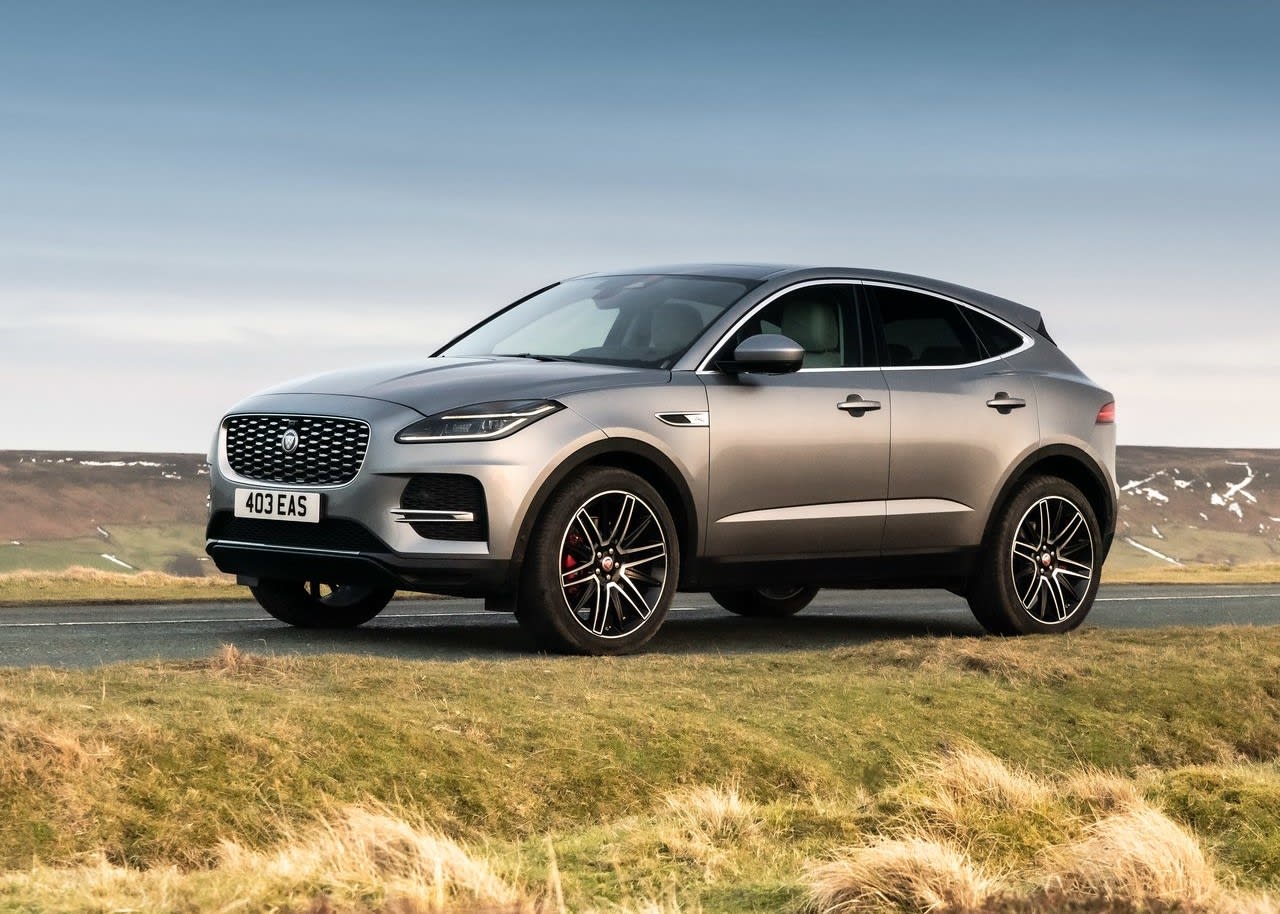
There’s a choice of three trims and several engines, most of which are four-wheel drive automatics, though the entry-level E-Pace comes with two-wheel drive and a manual gearbox.
Key Features
Smart-technology is becoming ever more the norm in cars, and the E-Pace is no exception. Via a smartphone app, drivers can warm their cars up before setting foot out of the house on a cold winter's morning. Equally, when the British weather decides to be hot for a change, you can cool the interior down before stepping into the driver’s seat.
Locking and unlocking the car from your phone is also offered. And those using the E-Pace as a company car will appreciate the ability to export driver logs on to their laptops in a spreadsheet to help claim those fuel expenses.
Front and rear parking sensors and full surround 3D cameras come as standard.
After a year of wearing face masks, we’re more aware than ever of what we’re breathing in, so Jaguar is now looking out for our health, too. The new air purification system filters out particulates at a bacterial level to ensure the cleanest air quality.
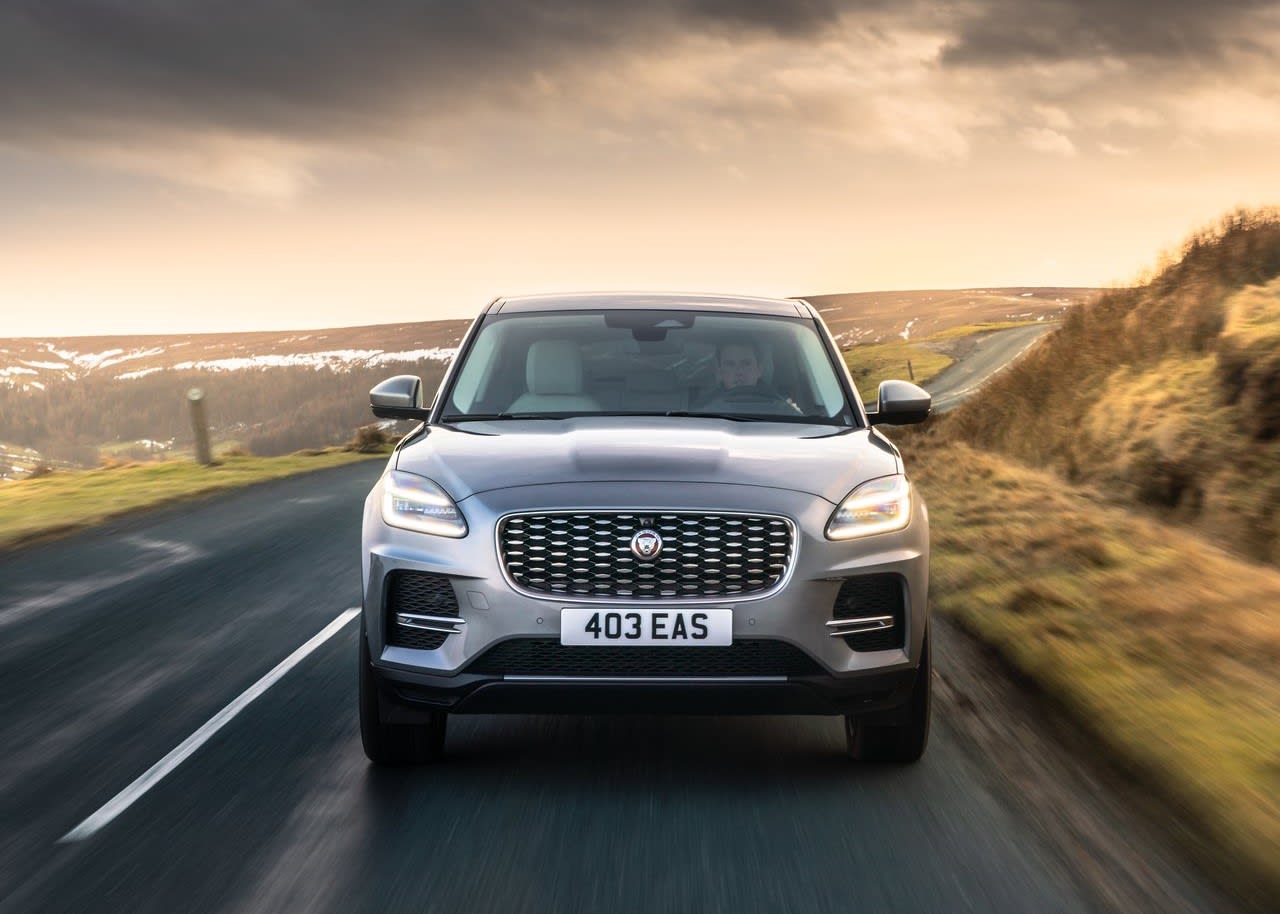
The PHEV version will do a claimed 34 miles on electric power only, which should be perfect for the school run and popping to the shops. And, if you use the sat-nav, the PHEV knows if you’re going to be driving through a low-emission zone, so it can save its electric-only mode for that part of the journey.
Heated windscreens (front and rear), heated front seats, electric folding mirrors, keyless start, climate control, cruise control and satnav are all provided as standard throughout the range. Radar-guided cruise control is also offered on higher models.
Performance & Drive
There’s a choice of several engines. Simply enough, with one exception, all the powerplants are 2.0-litre four-cylinder, though it gets a bit complicated after that.
If MHEV is also a new acronym for you, it stands for Mild Hybrid Electric Vehicle, meaning the engine can be turned off when coasting, braking, and when stationary.
The entry-level E-Paces are front-wheel drive - a choice of a MHEV petrol with an eight-speed automatic and 160PS, or a diesel with a manual gearbox and 163PS (the entry-level diesel is the only non-MHEV engine in the range).
The two other diesels are both MHEVs and come with four-wheel drive and a nine-speed automatic. One produces an identical 163PS, while there’s another with 204PS for those seeking more grunt.
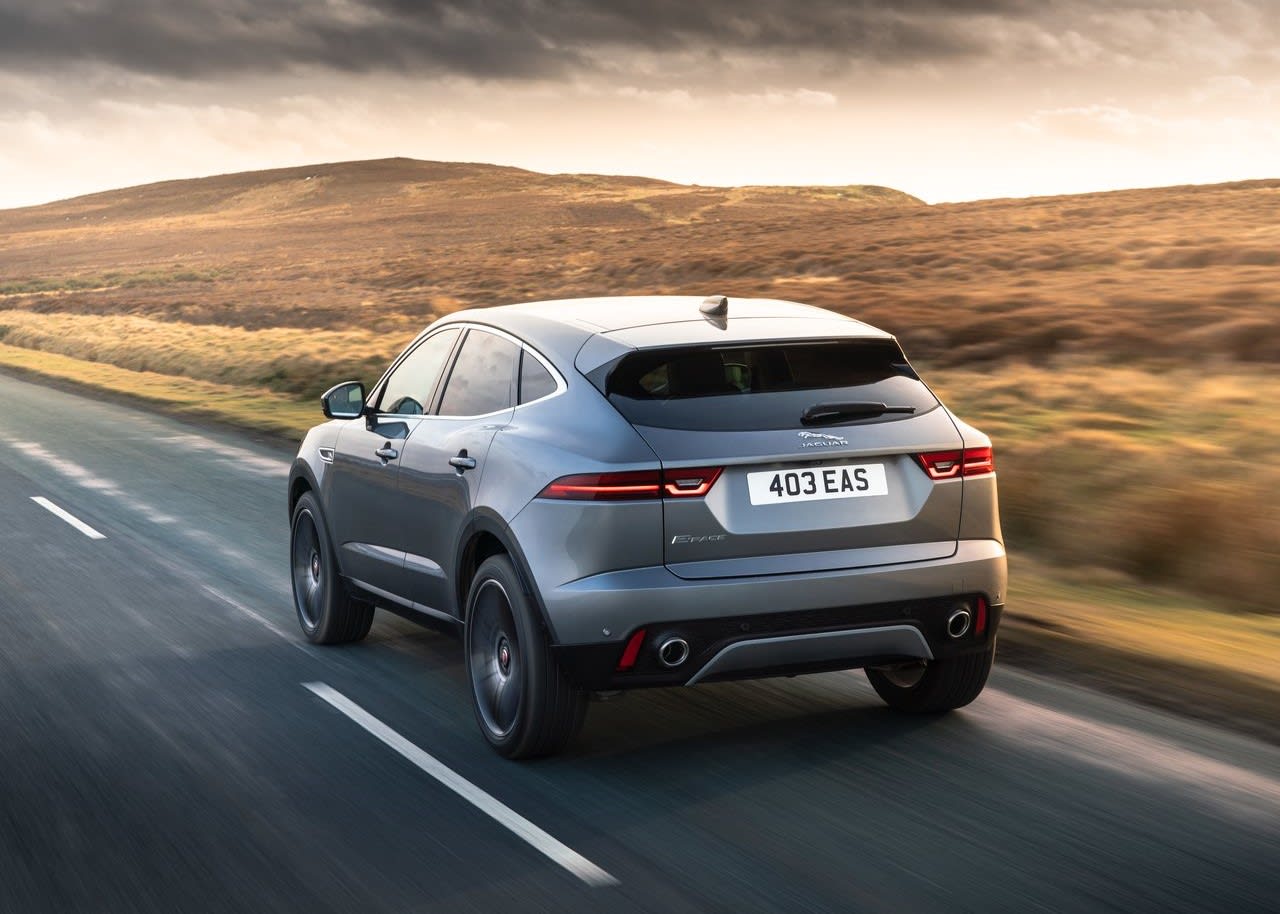
If you prefer petrol, the three other models take the power range further. They, too, are all four-wheel drive, nine-speed automatics but enter at 200PS, with a mid-range 249PS and 300PS at the top.
The exception is the PHEV. Those not familiar with the specs of such models may raise eyebrows – after all, the PHEV is only a 1.5-litre three-cylinder petrol engine (and an eight-speed automatic, rather than nine). But the added electric motor means it trumps the rest of the range at 309PS.
The E-Pace is a heavy car, with the petrol and diesels weighing in not much under two tonnes. The PHEV version might trim a bit of weight with the smaller engine but, after adding in the electric motor and batteries on top, it rolls on to your strained driveway at 2173kg. The entire range is heavier than any of its rivals, in some cases by several hundred kilos.
This undoubtedly impacts its agility. Mind you, Jaguar has at least done a decent job of keeping the side effects to a minimum, with torque vectoring helping to provide precise steering while maintaining a good feel for the road – and not as much body roll in the corners as you’d expect from such a brute. There are better SUVs on offer for the driving experience, however.
The 20-inch alloys on the top-of-the-range model provide for an unforgiving ride, though some trims offer smaller rims down to 17-inches, which would be a good choice for those who prioritise comfort over sporty performance.
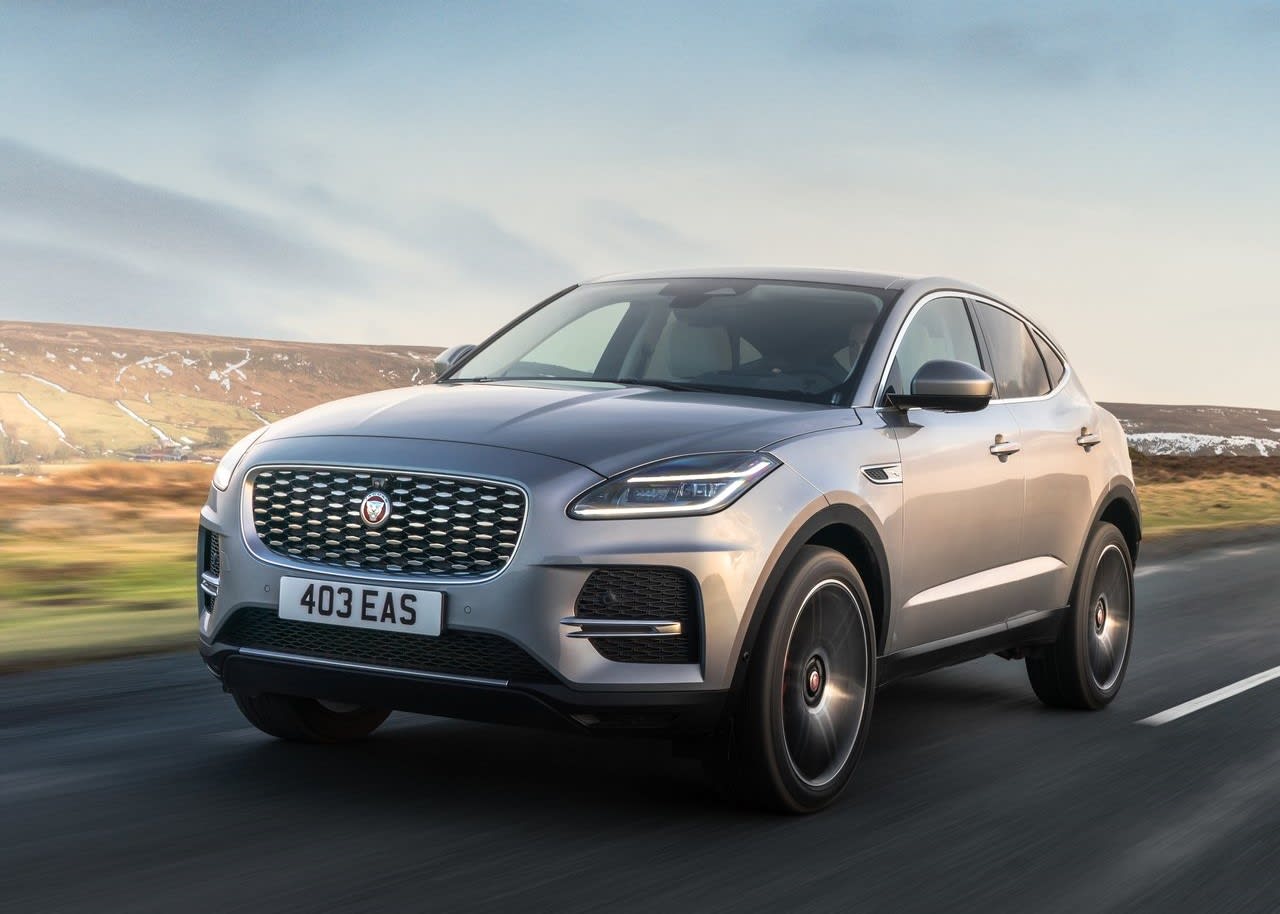
The shortness of the 0-62mph time may not be as crucial to SUV owners, but it's dealt with in 6.1 seconds in the PHEV. This is impressive given its weight, although this increases to as much as 9.5 seconds as you go down the range. Again, that’s still not bad, considering the weight and engine size – and that should provide some reassurance that the excess tonnage isn’t going to translate into sluggish acceleration.
Running Costs & Emissions
The PHEV is undeniably going to be the cheapest to run. At a claimed 141 miles per gallon, it dwarfs the fuel consumption of the rest of the range.
For the diesels, the entry-level engine with the front-wheel-drive will manage 46.9mpg (163PS), with the all-wheel-drive automatics achieving 44.3 (163PS) and 43.9mpg (204PS).
Petrols enter at 35.2mpg (160PS) in front-wheel drive, with the all-wheel-drive automatics achieving 31.9 (200PS), 31.8 (249PS) and 31.3mpg (300PS).
In truth, if you’re after a petrol E-Pace, then you’re likely more interested in performance than fuel consumption. But, with such a negligible difference in mpg figures across the all-wheel-drive petrol range, it's difficult to see why you’d choose anything but the 300PS model, especially given there’s barely more than £2,500 price difference between entry-level and top of the range four-wheel drive petrol models.
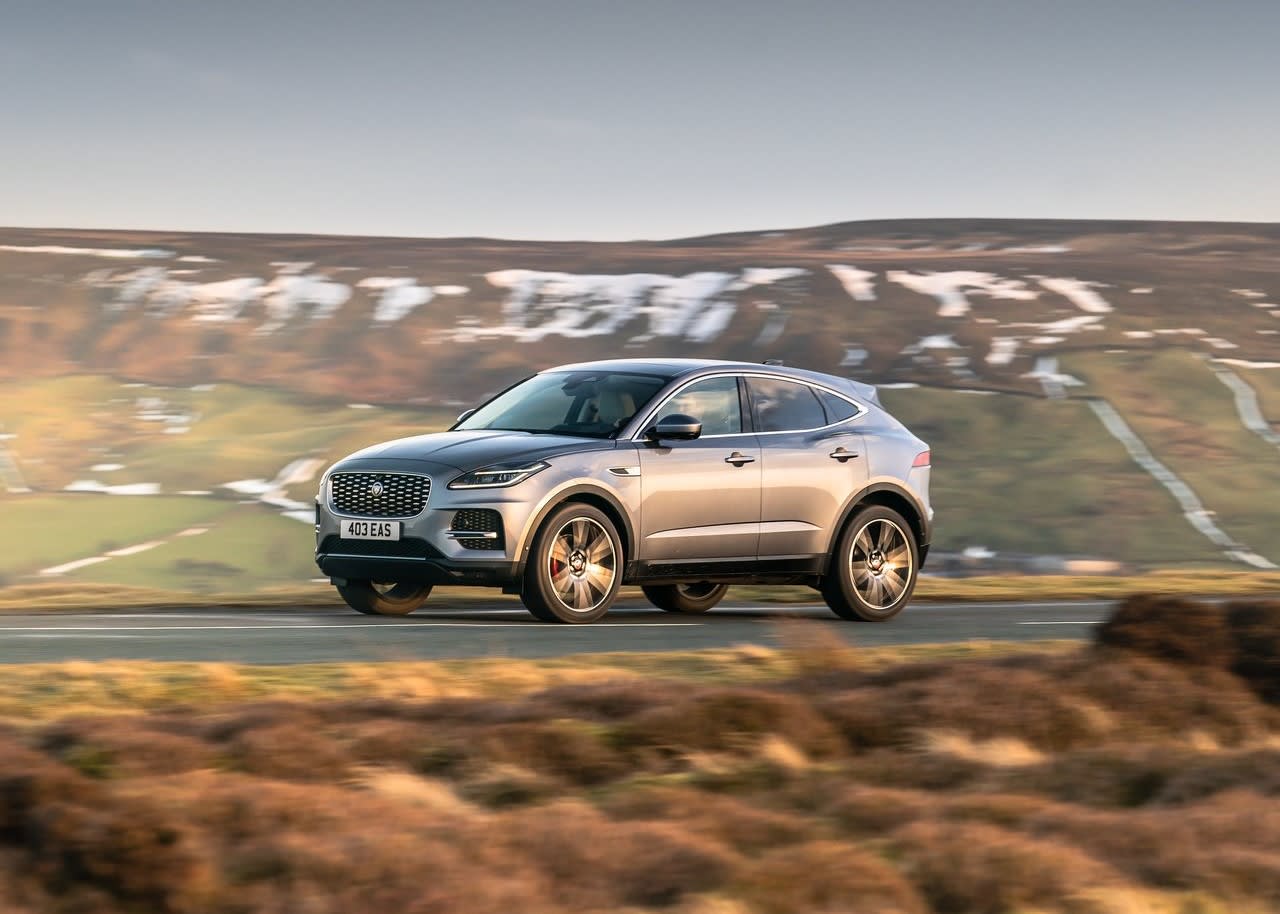
These lag behind the BMW X1 and Audi Q3, though. Most of the equivalent German models comfortably sit in the 40-50mpg range for petrols and the 50-60mpg range for diesels. The PHEV lists CO2 emissions as 44g/km when in hybrid mode, though obviously, that plummets to zero when you're in the electric-only setting. Unsurprisingly, that number outperforms the rest of the range by a significant margin.
The diesels churn out between 158 and 169g/km, while the petrols produce between 181 and 204g/km depending on which engine you choose.
All this means the first year’s car tax is just £10 for the PHEV, while the petrols will be taxed from £895 up to a whopping £1,345. The diesels all cost £895 for the privilege of being on the road in their birth year.
The PHEV is undoubtedly the one to have if you're environmentally conscious.
Interior & Technology
The E-Pace’s interior has been improved vastly – Jaguar said they wanted to make it more ‘driver focused’. And that’s good because the pre-facelifted interior was rather bare. It was almost as if it had been forgotten about somehow – oddly, there was just nothing really to it.
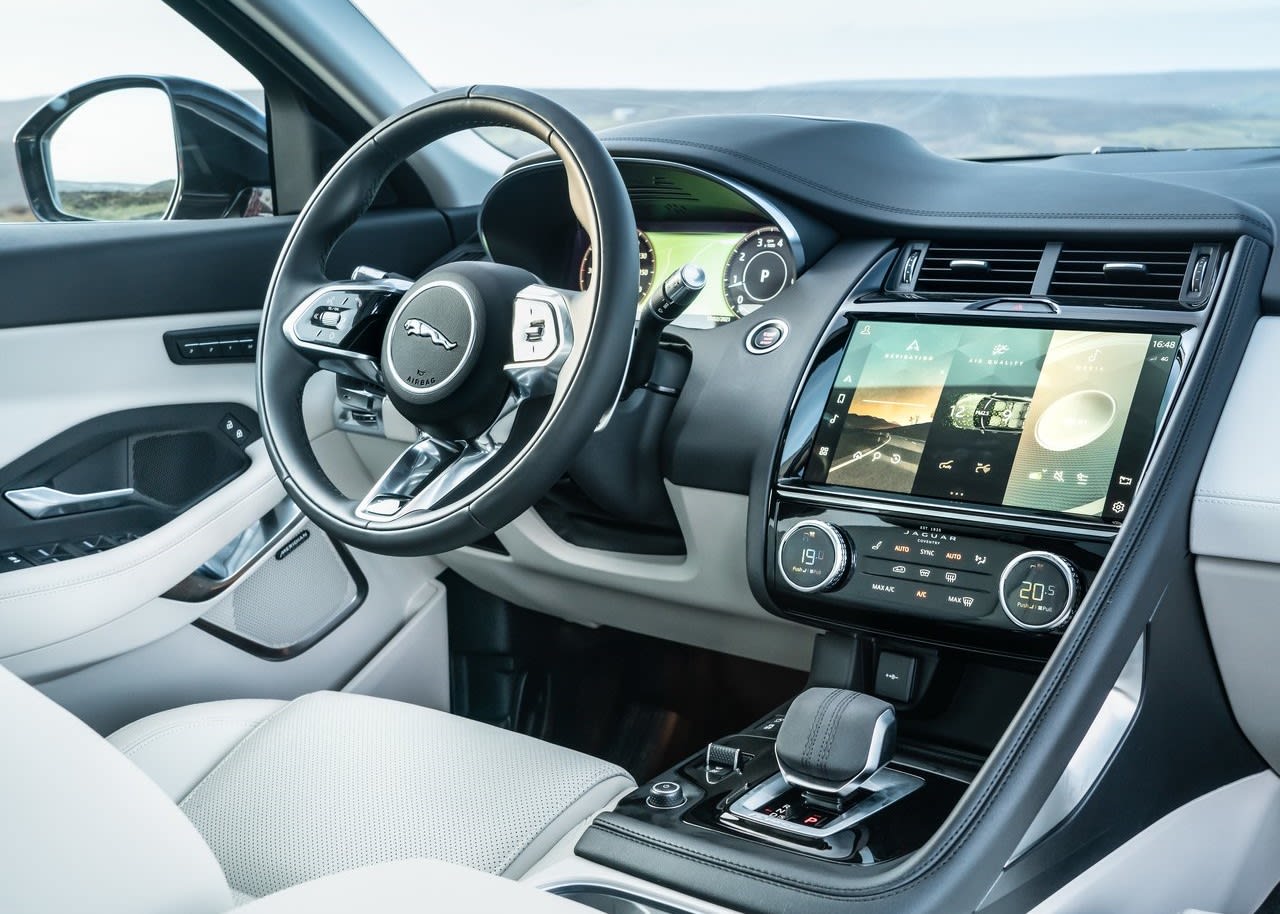
But now, a far more attractive array of switches and buttons have made all the difference without overcomplicating things. A new steering wheel with metallic gear-shift paddles and a far more attractive gearstick (called the ‘drive selector’) combines with other lighter touches to give the E-Pace an environment that offers a noticeable nod in the direction of the Jaguar XJ. And that's about as good an interior as you can get anywhere.
Cheap plastics still feature in places. But because the cabin is so improved and there are plenty of other gadgets to focus your mind on, the plastic bits won't disappoint too much. They don't stick out anymore, given there’s now so much more attractiveness to admire. You can wirelessly charge your phone by placing it flat behind the drive selector, while on some models the main dashboard behind the steering wheel is a screen rather than physical dials. That means it's customisable as well, displaying 3D sat-nav directions if you choose. There is also the option of a heads-up display.
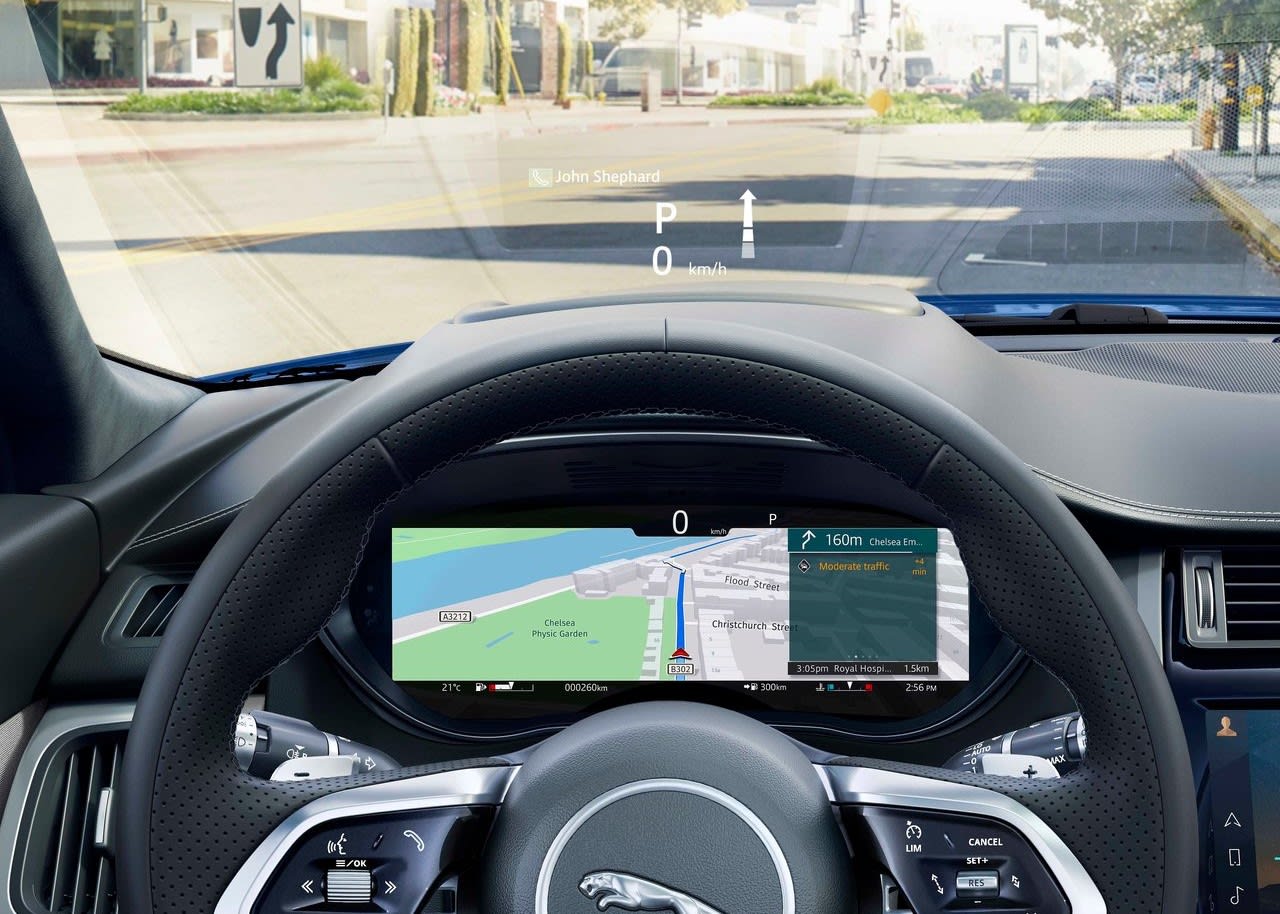
As standard, you get an enlarged 11.4-inch curved glass touchscreen housing Jag’s Pivi infotainment system. It’s beautifully presented and intuitive, giving over-the-air updates when they're released.
Android Auto and Apple CarPlay are also provided as part of the Pivi system, and Jaguar has focused on simplifying the menus to make it more user-friendly. It’ll even give you a percentage score to rate how economically you’ve driven.
Pivi has its own power supply, too, so there’s no waiting around for the satnav to wake up and find its bearings – it’s ready to go the second you start up.
Practicality & Boot Space
With 425-litres of boot space, expanding to 1234-litres with the rear seats folded away, the Jaguar E-Pace lags behind most of its immediate rivals.
The BMW X1 can accommodate 505-litres (1550 with the seats folded). The Audi Q3 is bigger still, with capacity for 530-litres (increasing to 1525), though the E-Pace trumps the smaller Audi Q2, which offers 405-litres (1050 with the seats down).
In truth, however, the 425-litres on offer should be more than enough to cope with everyday life.
The rear seats are in a 40-20-40 configuration, so you should be able to accommodate two people in the back without much of an issue. But, while SUVs naturally make you think that room won’t be an issue, three adults in the back are going to be more of a squeeze than you might think, especially if those in the front are tall.
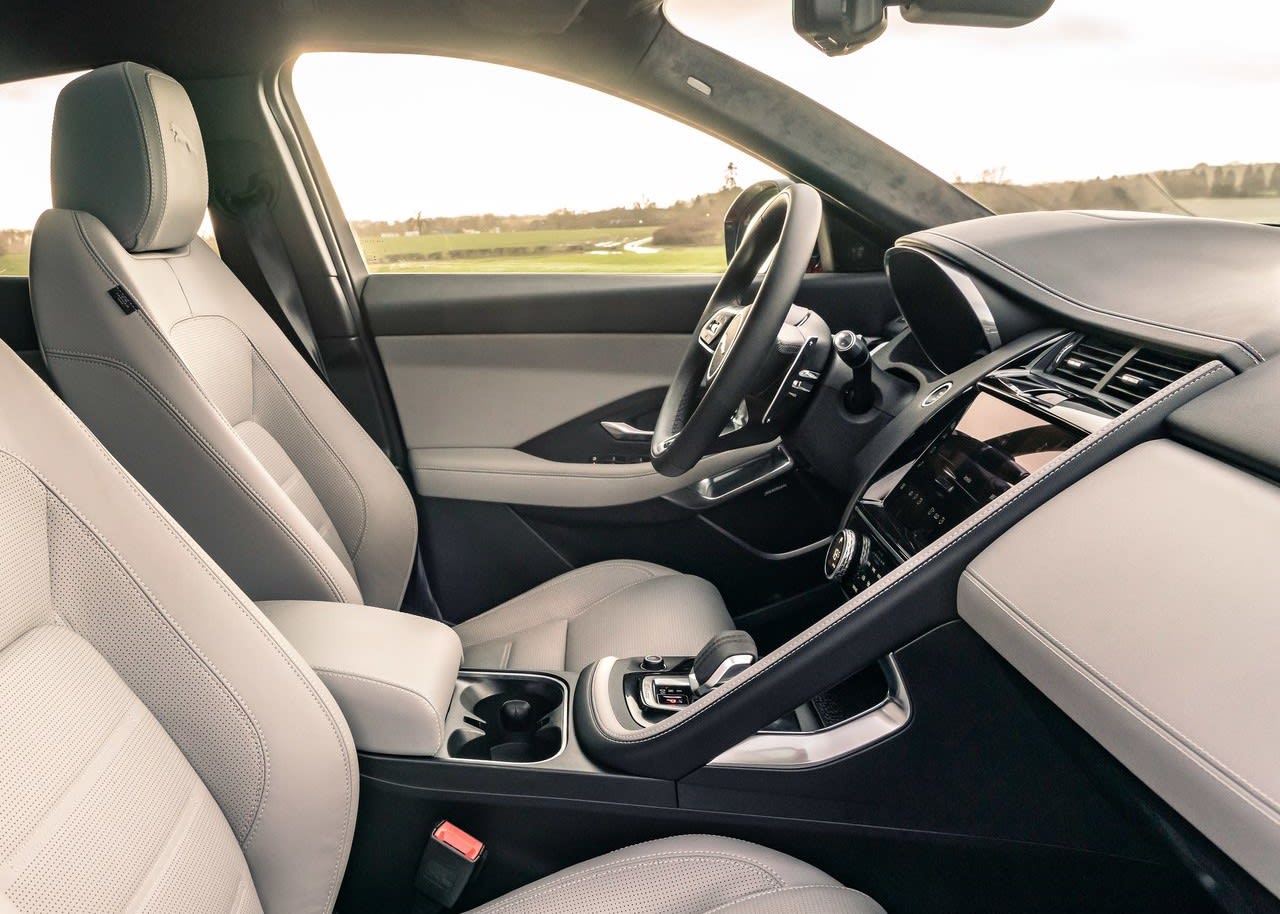
The X1, Q3 or even the Volvo XC40 are better alternatives here. The Jag’s back seats should be fine for taking the kids on a road trip, though.
Safety
The E-Pace comes with many gizmos to maximise safety on the roads.
The newly-designed headlights have an option called ‘Pixel LED’, which really lights up the road at night. It’s impressive – akin to having your main beams on all the time, but they’re clever enough to position themselves so that oncoming drivers don’t get dazzled as they approach.
The range-topping version provides radar-guided adaptive cruise control, which automatically matches the speed of the car in front, slowing to a stop if necessary, lessening driving fatigue for those regularly stuck in traffic jams.
Configurable Dynamics allows you to set up the car as you wish, depending on whether your mode of choice is aggression or comfort. At the same time, the Adaptive Dynamics system uses sensors to automatically make adjustments to the suspension, depending on what sort of road surface you’re on. The two systems can be used harmoniously with one another.
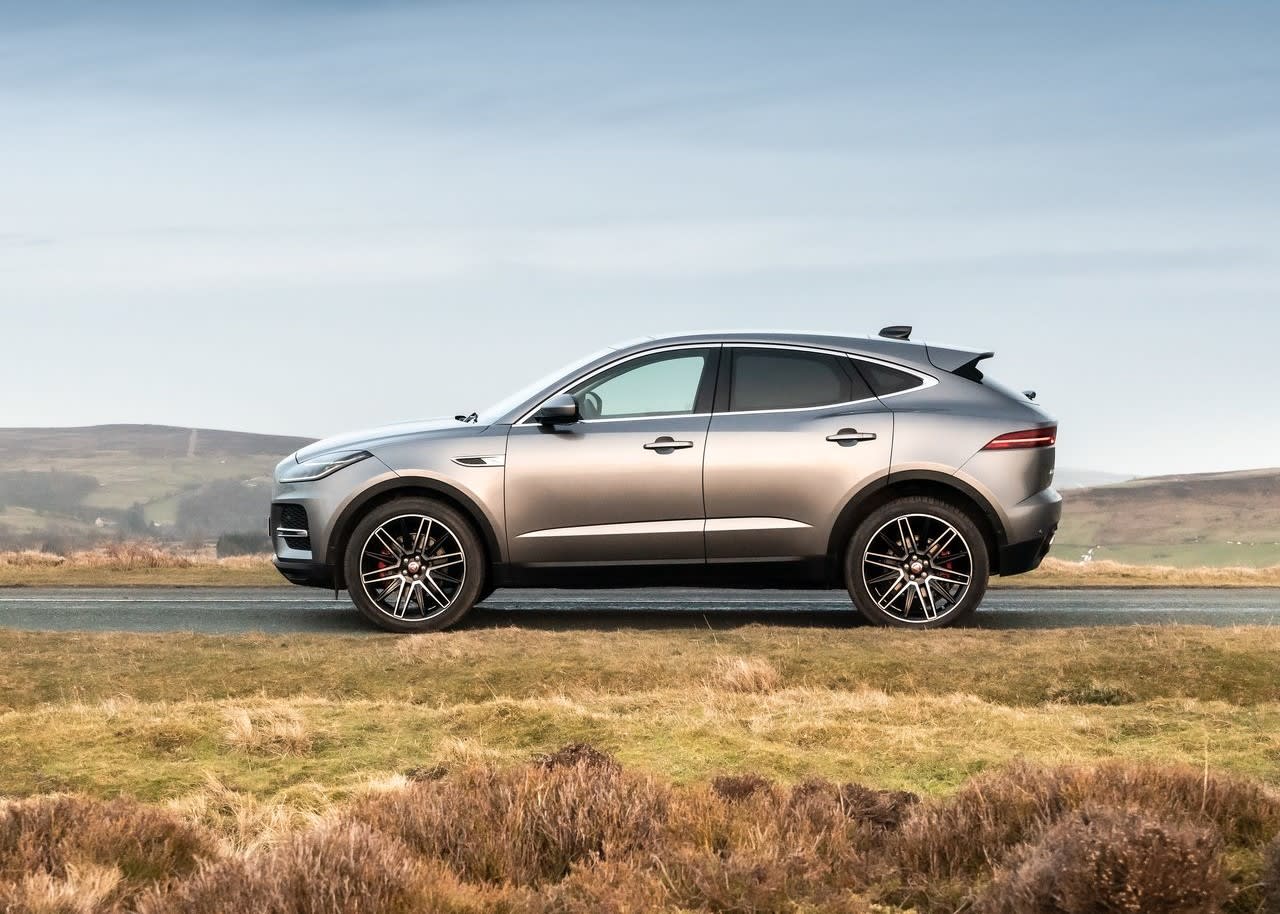
Active Driveline helps to save fuel by switching to two-wheel drive when four-wheel drive isn’t needed. It re-engages four-wheel drive within 350 milliseconds if it detects any wheel slippage, giving you the privilege of both worlds when it comes to safety and economy.
On the inside, the Pivi infotainment system provides traffic sign recognition, while the configurable dashboard display and heads-up display mean the driver doesn’t need to divert attention from the road. The parking sensors and surround cameras add another layer of safety equipment on top, along with a blind spot assist system on higher models.
The facelifted 2021 E-Pace hasn’t been NCAP safety tested, but it should at the very least meet the scores it achieved back in 2017, when it earned a five-star rating, scoring 86% for adult occupants, 87% for child occupants and 72% for safety assists.
Options
The E-Pace comes in three main trims: the standard E-Pace, the R-Dynamic, and the 300 Sport.
300 Sport is the top of the range and includes pretty much everything.
Over the standard trim, the £1,400 R-Dynamic option adds a sporty-styled exterior, faux leather luxtec seats, metal pedals and metal plates on the doors, including the tailgate, amongst a few minor cosmetic features.
Both the standard and R-Dynamic trims can then be left as they are or further upgraded with one of two Specification Packs – the ‘S’ version or the ‘SE’ version.
Upgrading to the ‘S’ spec adds 18-inch wheels over the standard 17-inch, animated directional indicators (a posh way of saying ‘indicators whose lights appear to move in the direction you’re indicating’), electric seats and an 'Online Pack'. This includes a data plan to keep your car connected.
The ‘SE’ spec adds all the above but upgrades you to 19-inch wheels, adds in automatic high beam, a powered tailgate, the interactive dashboard display, and the Blind Spot Assist.
The PHEV is only available in R-Dynamic trim (further upgradeable to S or SE).
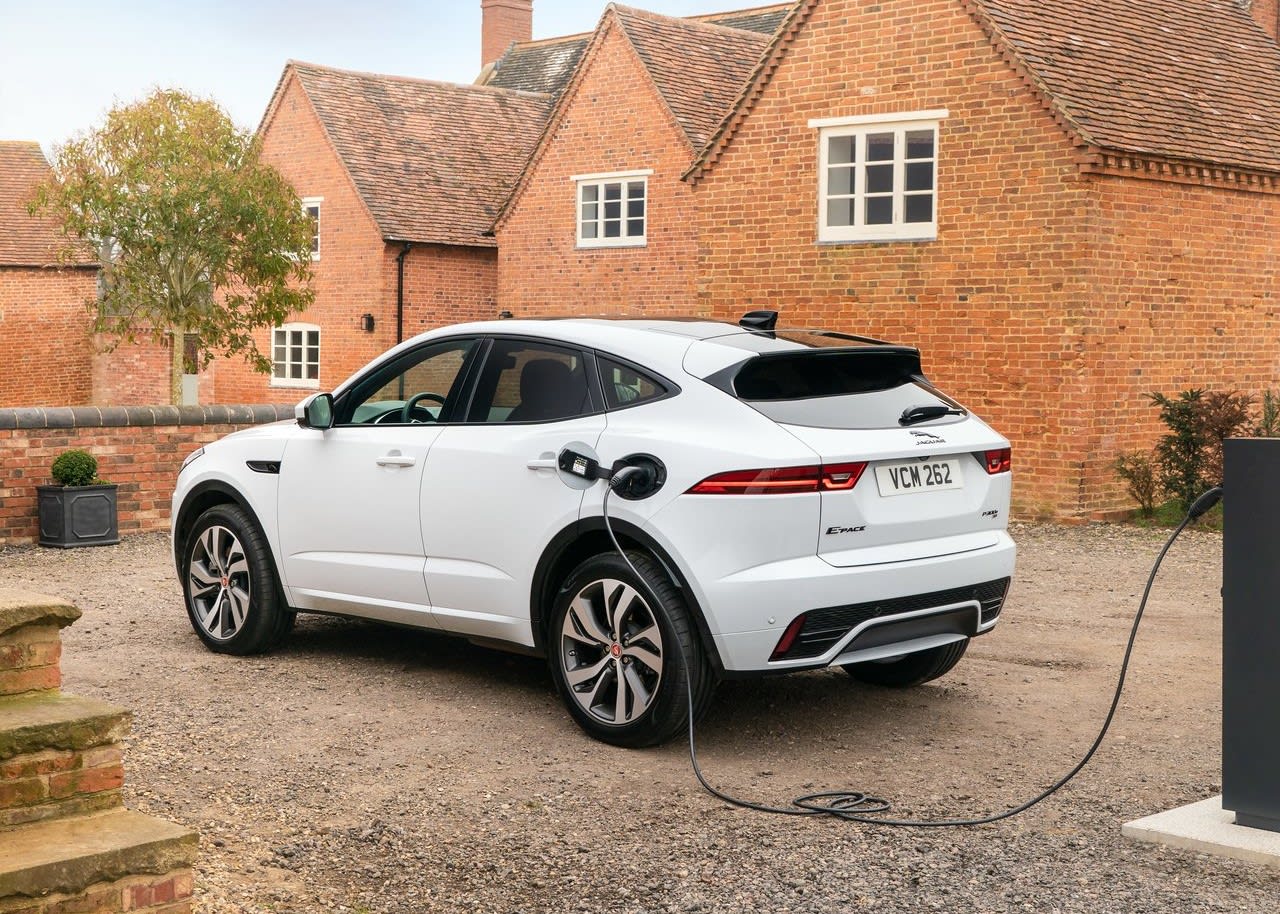
The 300 Sport is a standalone model, offering no further specification upgrades, though it includes just about every one of the options listed above as standard, as well as 20-inch alloys. There’s only one engine, though – the top-of-the-range 300PS petrol.
But then, you can add much more in, including tinted windows, a panoramic roof, the Pixel LED headlights, adaptive cruise control, heated mirrors, the air purification system, premium cabin lighting, wireless phone charging, WiFi, a tracker, additional power sockets and a smart rear-view mirror. This can switch between an actual mirror and a display via a rear camera, which is useful for having a clear field of vision behind you if you've got taller passengers or items in the back obstructing your view.
Sadly, so many of the very cool features that make the E-Pace a serious contender are optional extras, even on the range-topping 300 Sport, so expect to have a hard time deciding whether to part with more cash.
Rival Cars
Today’s BMWs and Audis still have somewhat awkward love-hate looks when it comes to their SUVs, but Jaguar’s design philosophy seems as though it's more suited to being stretched over larger bodywork.
That said, BMW’s X1 and X2, and Audi’s Q2and Q3, are still arguably better SUVs in terms of the overall driving experience.
If you prefer British, you should also consider the Range Rover Evoque, with which the E-Pace shares a lot of its DNA. It’s superb and arguably better, with a price band very similar to the Jaguar.
In that respect, the question has to be asked: why would you go for a 4x4 from the sister-brand to the king of the 4x4s when you could have one from the king himself?
Verdict & Next Steps
Overall, the Jaguar is lovable, resolute and much improved. Yes, there are better SUVs out there – and turning down a Range Rover Evoque for it is probably an odd thing to do.
But the E-Pace is arguably more attractive and proves that Jaguar is not just here to make up the numbers – it's serious about making significant strides in the SUV market.
On most things but the looks, it’s hard to justify buying it over the Evoque, a Volvo XC40, BMW X1 or Audi Q3.
The X1 and Q3 all have entry-level models that are a bit cheaper. And the brilliant XC40 is loads less expensive. Even the Evoque is slightly more affordable at entry-level. But the E-Pace’s aesthetics are so striking and head-turning – far more so than the alternative Euro boxes.
The exasperating thing is that you’ll be spending a lot of money for a car that, by SUV standards, is still on the small side. To then find that you have to pay extra for so many of the features that could make the E-Pace a standout from the rest is a double dollop of disappointment.
View latest Jaguar E-Pace leasing deals - guide price from £363.35 per month inc VAT**
Looking for a great leasing deal? Check out our incredible range of car lease deals
New luxury SUV? Read our latest Reviews and find the right model for you
Want to know more about leasing? Take a look at our comprehensive Leasing Guides
Interested in everything motoring? Why not catch up on all the latest Car Leasing News.
*Score based on Select’s unique meta score analysis, taking into account the UK’s top five leading independent car website reviews of the Jaguar E-Pace
**Correct as of 01/06/2021. Based on 9 months initial payment, 5,000 miles over a 48 month lease. Initial payment equivalent to 9 monthly payments or £3272.83 Ts and Cs apply. Credit is subject to status.




















